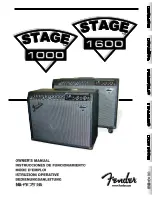
Dive Computer Limitations
While the
IQ-400
is based on cur-
rent decompression research and
technology, the user/ diver must
realize that the computer cannot
monitor the actual physiological
functions of an individual diver.
All decompression schedules cur-
rently known to the authors,
including the U.S. Navy Tables, are
based on a theoretical mathemati-
cal model which is intended to
serve as a guide to reduce the probability of decompression sickness.
The mathematical model uses an ascent rate of 10 m/min [33 ft/min].
Therefore it is critical that a proper ascent rate is always used.
The reader/diver is forewarned that individual physiological differences, severe
environmental conditions and predive activities, especially those which tend to
increase dehydration, may increase the risk of decompression sickness.
As a safety precaution TUSA recommends that divers using the
IQ-400
should
maintain no less than 10 minutes no-decompression time remaining at all
9
WARNING
DIVE PRACTICES WHICH INCLUDE THE ABOVE
DESCRIBED “HIGHER RISK DIVE PROFILES” ARE
BELIEVED TO INCREASE THE RISK OF DECOMPRES-
SION SICKNESS AND AS SUCH CONSIDERED POTEN-
TIALLY DANGEROUS AND SHOULD BE AVOIDED EVEN
IF THEY CONFORM TO THE MATHEMATICAL MODEL!
!
!
WARNING
DO NOT USE THE
IQ-400
WITH NITROX MIX!
The mathematical tissue calculation model of the
IQ-400
has
been designed for use with standard breathing air only (approxi-
mately 21% oxygen and 79% nitrogen by volume). Therefore,
the
IQ-400
must not be used for diving with “Nitrox” or other
mixed gases.
!
!
depth
time
Figure 1.2
Recommended Profile












































